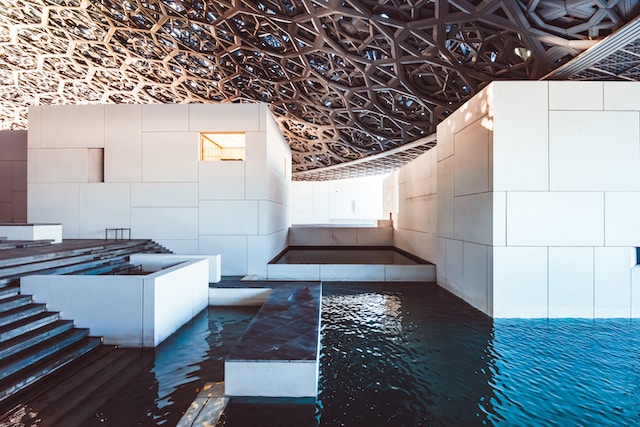A well-designed pool and spa can be a fantastic addition to any home, providing a relaxing and enjoyable space for family and friends. In this article, we will explore the importance of good pool and spa design, the factors to consider before designing a pool and spa, the different types of pools and spas available, how to design your pool and spa, and maintenance and upkeep.
Swimming pools and spas are more than just water features in your backyard. They can be an essential part of your lifestyle, providing a great way to stay active, de-stress, and spend time with family and friends. However, a poorly designed pool and spa can quickly become an expensive mistake. In this article, we will discuss the benefits of good pool and spa design, the factors to consider before designing a pool and spa, the different types of pools and spas available, how to design your pool and spa, and maintenance and upkeep.
Factors to Consider Before Designing a Pool and Spa
Designing a pool and spa can be an exciting process, but before you start, there are some important factors to consider.
Budget
The first factor to consider when designing a pool and spa is your budget. You need to decide how much you are willing to spend on the project, taking into account the size of the pool and spa, the materials used, and any additional features.
Space
Another critical factor to consider is the amount of space you have available. The size and shape of your yard will determine the type of pool and spa you can have.
Purpose of the Pool and Spa
Before designing your pool and spa, consider its primary purpose. Will it be for relaxation, exercise, or entertainment?
Safety Measures
It’s essential to consider safety measures when designing a pool and spa, such as pool fences, pool covers, and alarms.
Types of Pools and Spas
There are several types of pools and spas available, each with its own benefits and drawbacks. The four most common types are in-ground pools, above-ground pools, plunge pools, and swim spas.
In-Ground Pools
In-ground pools are the most common type of pool, and they are often the most expensive. They are permanent structures that can be customized to your desired shape, size, and design.
Above-Ground Pools
Above-ground pools are more affordable than in-ground pools, and they are easy to install and remove. They are also portable and can be disassembled and relocated.
Plunge Pools
Plunge pools are small pools designed for relaxation and hydrotherapy. They are generally less expensive than traditional pools and are perfect for smaller backyards.
Swim Spas
Swim spas are a combination of a pool and a hot tub, offering the best of both worlds. They are perfect for swimming, but also provide the benefits of a hot tub for relaxation and therapy.
Designing the Pool and Spa
Once you have considered the factors above and chosen the type of pool and spa that suits your needs, it’s time to design it.
Materials to Use
The materials you choose for your pool and spa can affect its appearance, durability, and maintenance requirements. Common materials include concrete, fiberglass, and vinyl.
Pool and Spa Shapes
The shape of your pool and spa can affect its functionality and appearance. Popular shapes include rectangular, oval, and free-form.
Water Features
Water features such as fountains, waterfalls, and jets can add beauty and tranquility to your pool and spa.
Lighting
Lighting can enhance the ambiance of your pool and spa and also provide safety and security at night.
Maintenance and Upkeep
Proper maintenance and upkeep are crucial for the longevity and safety of your pool and spa. Regular cleaning, water treatment, and equipment checks are essential.
Cleaning
Regular cleaning of your pool and spa is necessary to prevent the buildup of debris, algae, and bacteria.
Water Treatment
Water treatment involves maintaining the proper chemical balance of your pool and spa water to keep it clean and safe for swimming.
Frequently Asked Questions
- How much does it cost to design and build a pool and spa? The cost of designing and building a pool and spa can vary widely depending on factors such as the type and size of the pool and spa, materials used, and any additional features or amenities. A basic above-ground pool can cost a few thousand dollars, while an elaborate in-ground pool and spa can cost tens of thousands of dollars or more.
- How long does it take to build a pool and spa? The timeline for building a pool and spa can also vary depending on factors such as the size and complexity of the project, local building codes, and weather conditions. Generally, the construction process can take several weeks to several months.
- Can I install a pool and spa myself? While it is possible to install a pool and spa yourself, it is typically not recommended unless you have significant experience and knowledge in construction and plumbing. Pool and spa installation can be complex, and mistakes can result in costly damage or even injury.
- How often should I clean my pool and spa? You should clean your pool and spa regularly to prevent the buildup of debris, algae, and bacteria. Depending on usage and other factors such as weather and location, you may need to clean your pool and spa weekly or more often.
- What is the best material for a pool and spa? The best material for a pool and spa depends on factors such as budget, durability, and aesthetics. Common materials include concrete, fiberglass, and vinyl. Each material has its pros and cons, so it’s important to research and consider the options carefully before making a decision.
Conclusion
In conclusion, a well-designed pool and spa can add value and enjoyment to your home, but it’s essential to consider the factors before designing one. There are different types of pools and spas to choose from, each with its benefits and drawbacks. It’s important to properly maintain and clean your pool and spa to ensure its longevity and safety. With proper planning and care, your pool and spa can provide years of relaxation and fun.
Source: http://www.jonahweb.org/












